Hansegger : A Question of Style
The Swiss artist John Konstantin Hansegger (born as Johann Konstantin Egger, 1908, St. Gallen; † 1989, New York) has become an unknown figure in the history of modern art. A bit surprising, while, in his times, he was considered a child-prodigy, and later performed as one of the key-players, breaking grounds in multiple artistic areas; from inventing new styles to creating platforms for supporting other artists.
Abstract {Portraits} : Parallelism
Hansegger painted leading figures of the 20th century, from live-sittings; such as Einstein, Picasso, Freud, Nelson Rockefeller, Eisenhower, Albert Schweitzer, Zen Master Suzuki, conductor Toscanini and many other known, as well as unknown figures, like a neighbor, or a friend.

When he went to Paris, Hansegger was invited to join the Surindépendants (1937); and worked alongside Picasso, Fernand Léger, and Mondriaan. Encompassing the early modern characteristics into his paintings.
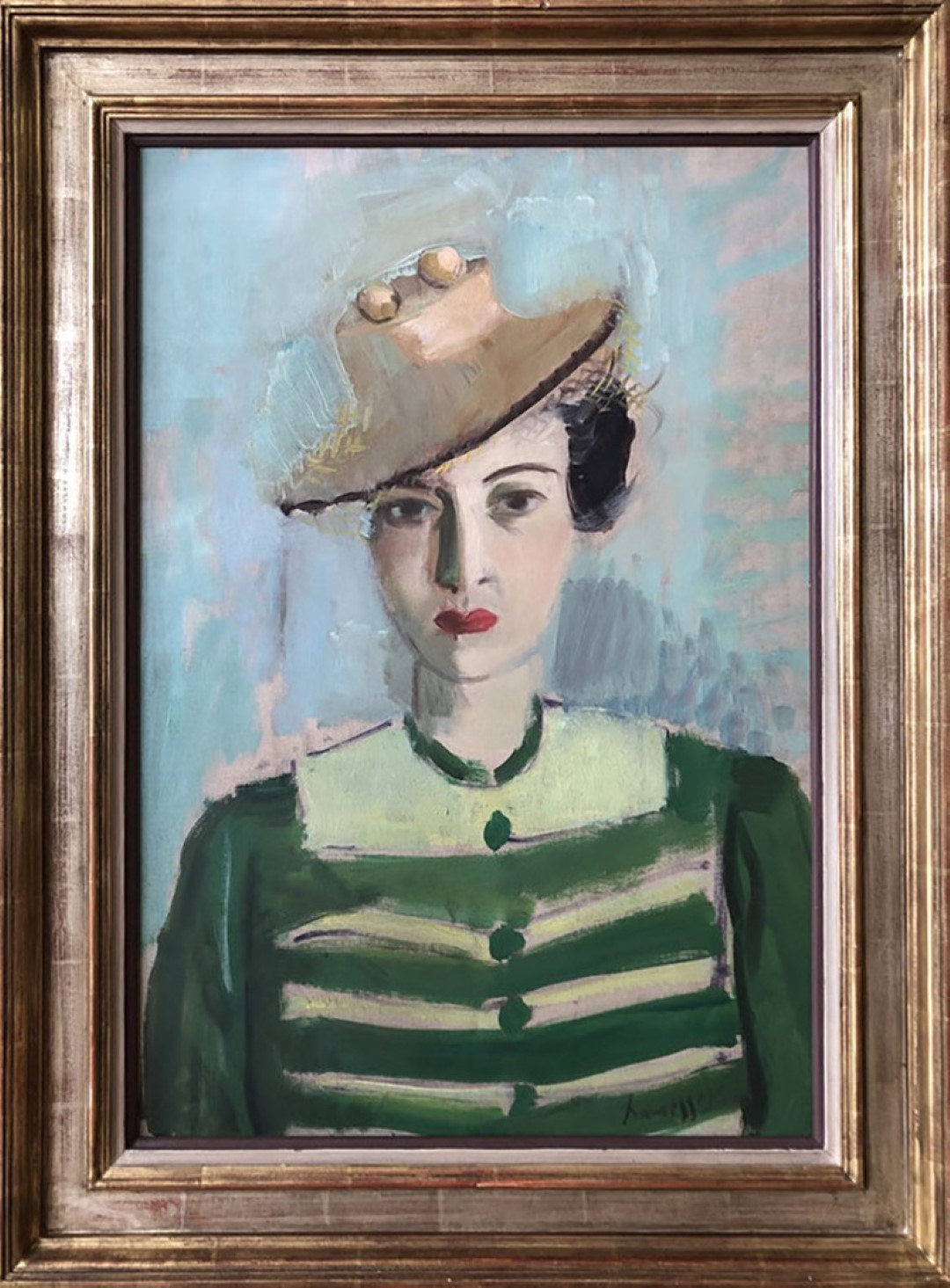
In Paris, Hansegger invented his own style: Abstract Parallelism. The Swiss Artist Ferdinand Hodler, who founded the Künstlervereinigung Zürich (1933), already coined a similar term Parallelism, which he described as a personal form of symbolism.
Hansegger was a member of his Künstlervereinigung; and later added Abstract to the word, changing it into Abstract Parallelism: Striped backgrounds; containing small wobbling figurative shapes, sparking imaginative unconscious thoughts.
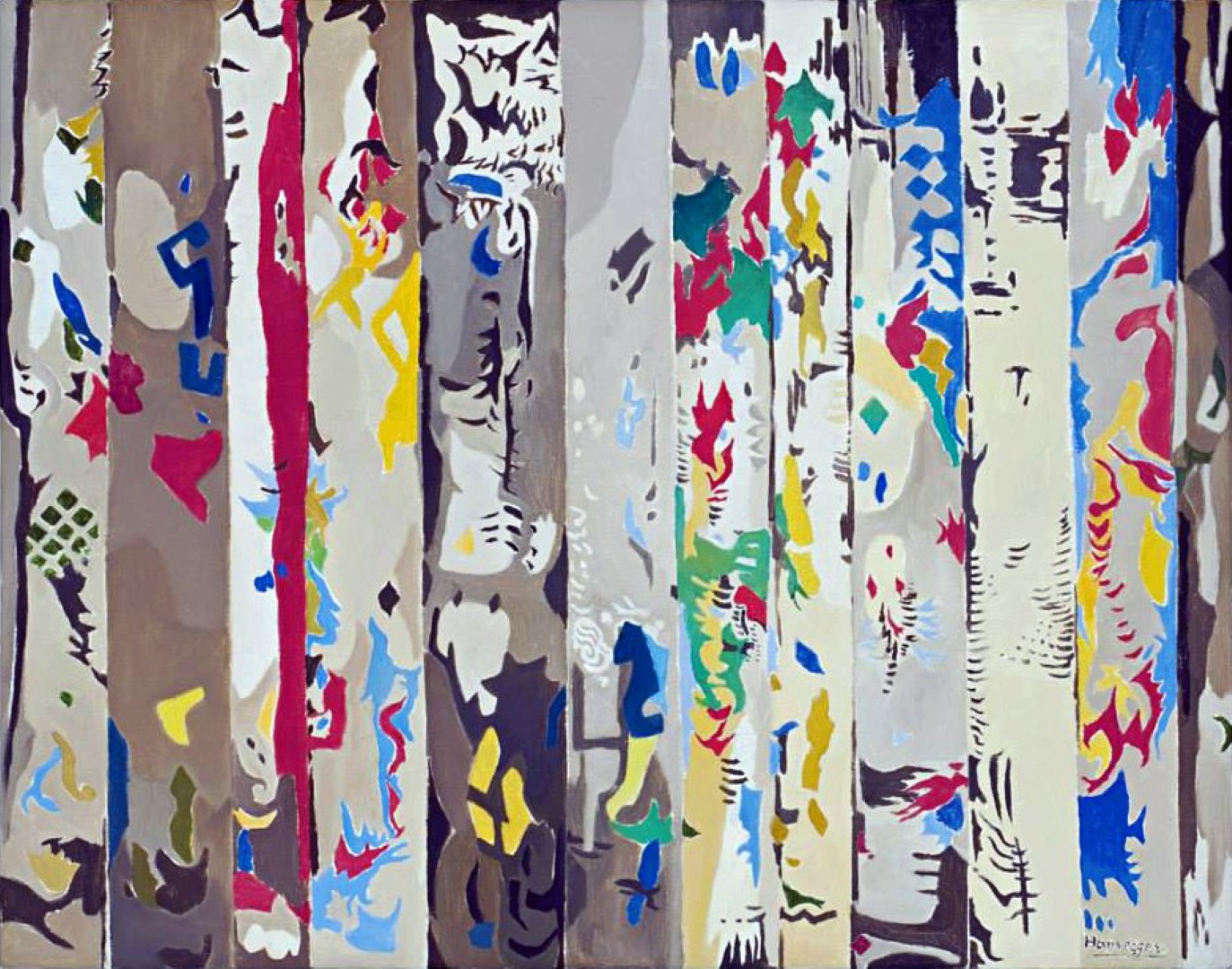
His Abstract Parallelism series was presented together with the work of Paul Klee and Kandinsky, at the well established Galery Nierendorf (1947), New York.
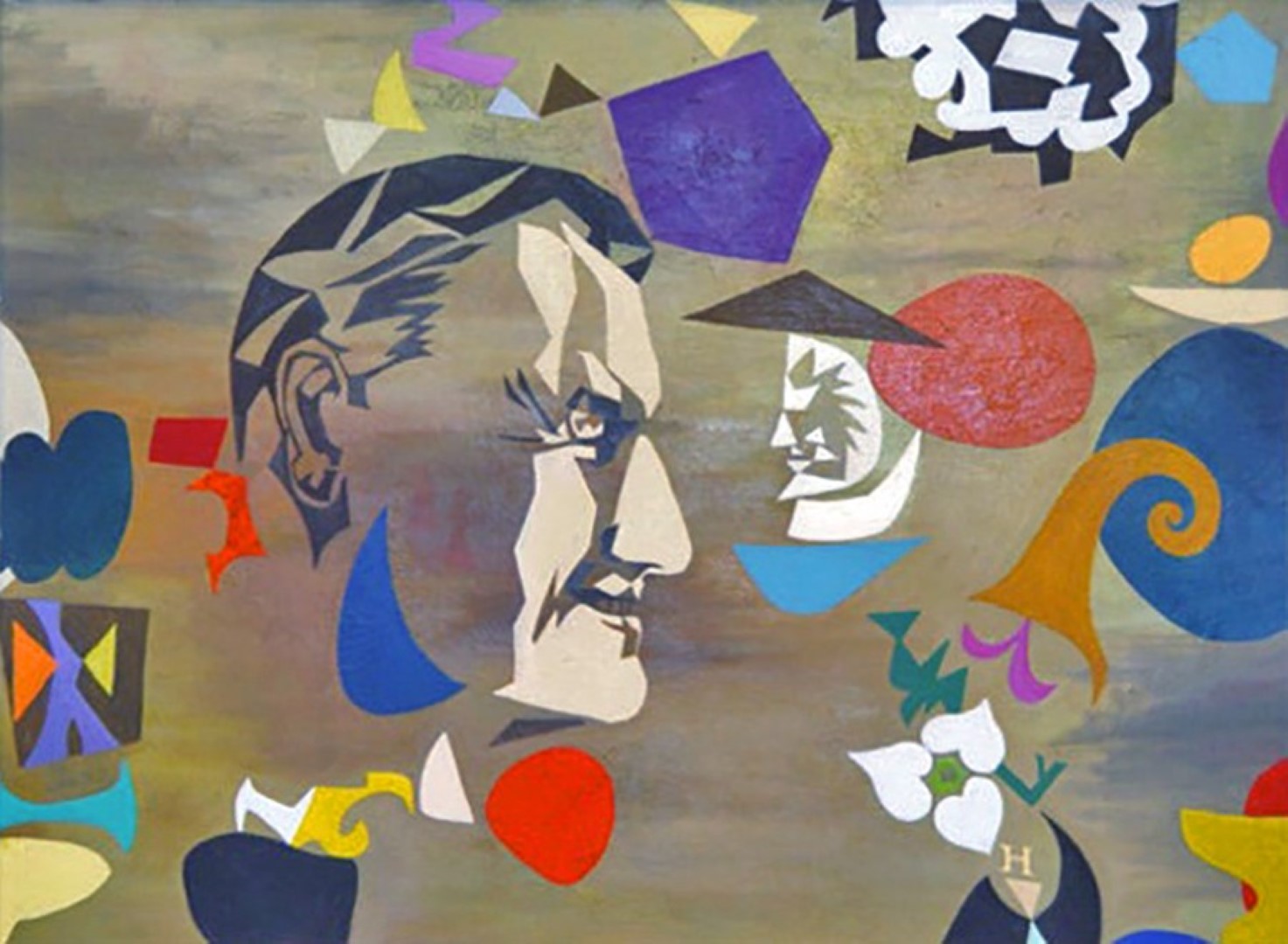
In New York, Hansegger continued with Abstract Parallelism, as well as his portraits. He knew who was functioning as the main catalyst in the modern art movement: the businessman, politician, and art patron Nelson Rockefeller. He arranged a portrait session with Rockefeller, resulting in the above work.
Many artists would have settled the moment they found their own style, but Hansegger was a bit different. He didn’t settle with Abstract Parallelism as his main activity and continued exploring.
Allianz
Before living in New York, Ecuador and travelling to Japan,Israel{Palestine} and South-Africa, but after Paris, Hansegger played an active role in the Allianz art-group (founded 1937, Zurich), led by wunderkind Max Bill.
They formed a group of abstract artists in Zurich: Jean Arp, Sophie-Taeuber, Verena Loewensberg, Le Corbusier, Hansegger, Camille Graeser, Leo Leuppi, Richard Paul Lohse and others. Their artistic ideas were based on the ground-breaking Art-Concrete vision of Theo van Doesburg (1931, Paris). Pure constructed abstract art.
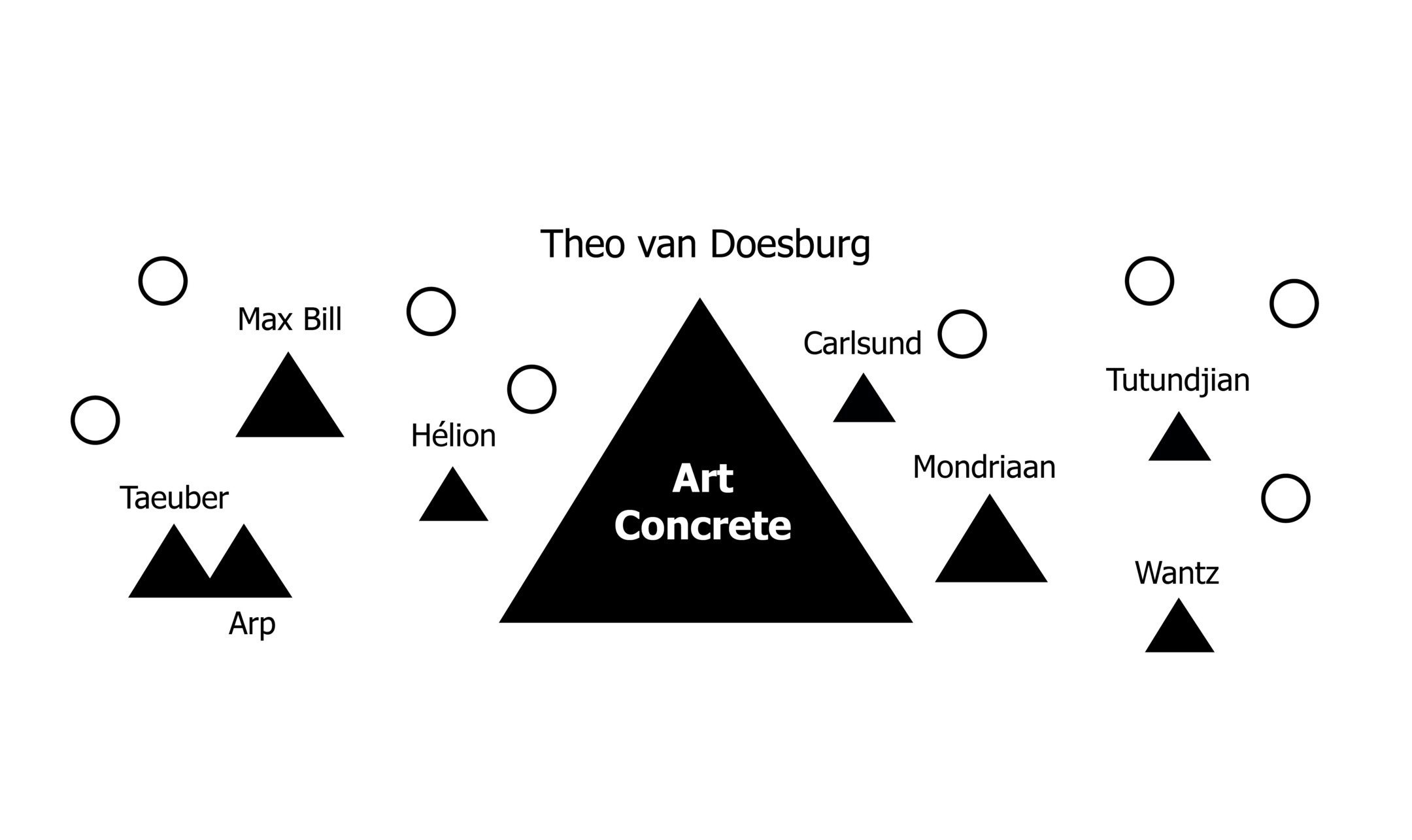
Max Bill & the Allianz were financially supported by John Hansegger to expand their ideas with numerous exhibitions and publications. Between 1942 and 1947 Hansegger took part in almost all the exhibitions held by the Allianz group.
The general tendency of the Allianz work is a very rigid, cold, methodical approach to art; Hansegger his Art-Concrete works deviated from these tendencies. Inside his constructions he built room for the personal. His constructive artworks always contain a childlike, playful dimension.

Galerie des Eaux Vives {Waters of Life}
But Hansegger’s most notable act was the gallery he established in Zurich. “Galerie des Eaux Vives” (1942–1946). The only art-gallery in Europe displaying and selling abstract art during World War II.
It was an economic failure, though. At those times nobody in Europe wanted to be closely associated with Klee, Kandinsky and co., the paintings Hansegger sold. You may understand why. But artistically it meant a great push for the abstract art movement in Europe, during the struggling times of war.
Under “Eaux Vives” Hansegger also published twelve short journals about abstract art, called abstrakt | konkret and a small poetic book: Intime Reise.
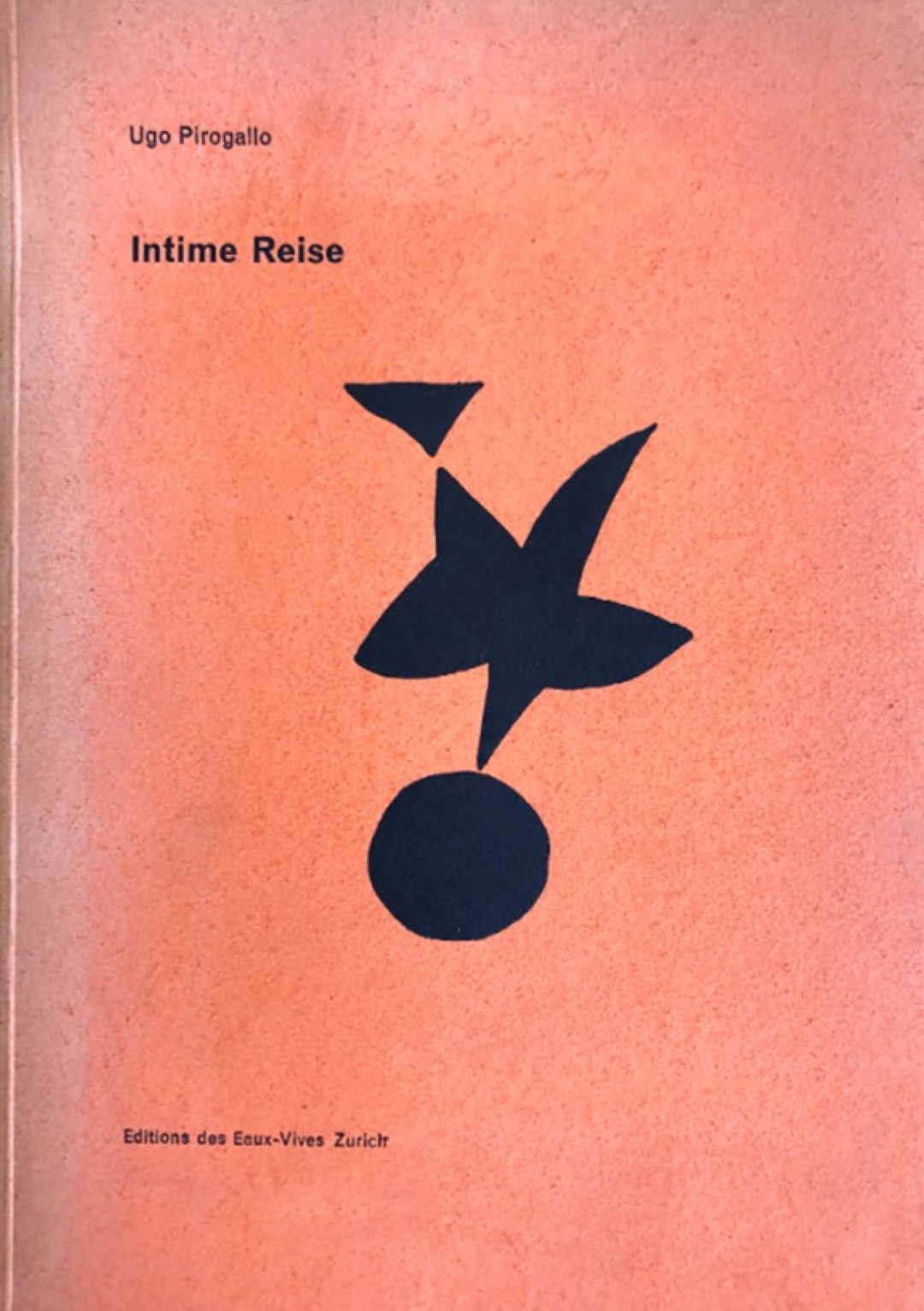
Freestyle by Hansegger
Hansegger was an artist that didn’t stick to one style: to one fixed method, not to the figurative, nor the abstract. Hansegger was full of experimentation, leaving behind a dense body of work that spans from realistic landscape impressions to abstract construction, from kitschy-looking-paintings to elaborate masterpieces.
In my last essay: {Theo van Doesburg} : Introduction into Imaginational Theory I explain the seemingly ungraspable creative process of Theo van Doesburg. His place in modern art history is therefore still misunderstood.
With Hansegger we turn it up a notch; he is not misunderstood; he is completely cancelled out of modern art history. How can an artist paint so many different looking works? In so many different styles? It doesn’t seem to make sense, it’s incomprehensible. Still, you can see it’s Hansegger, though. I will explain his creative process in the following chapters.
Spiral of Time {Chronos}
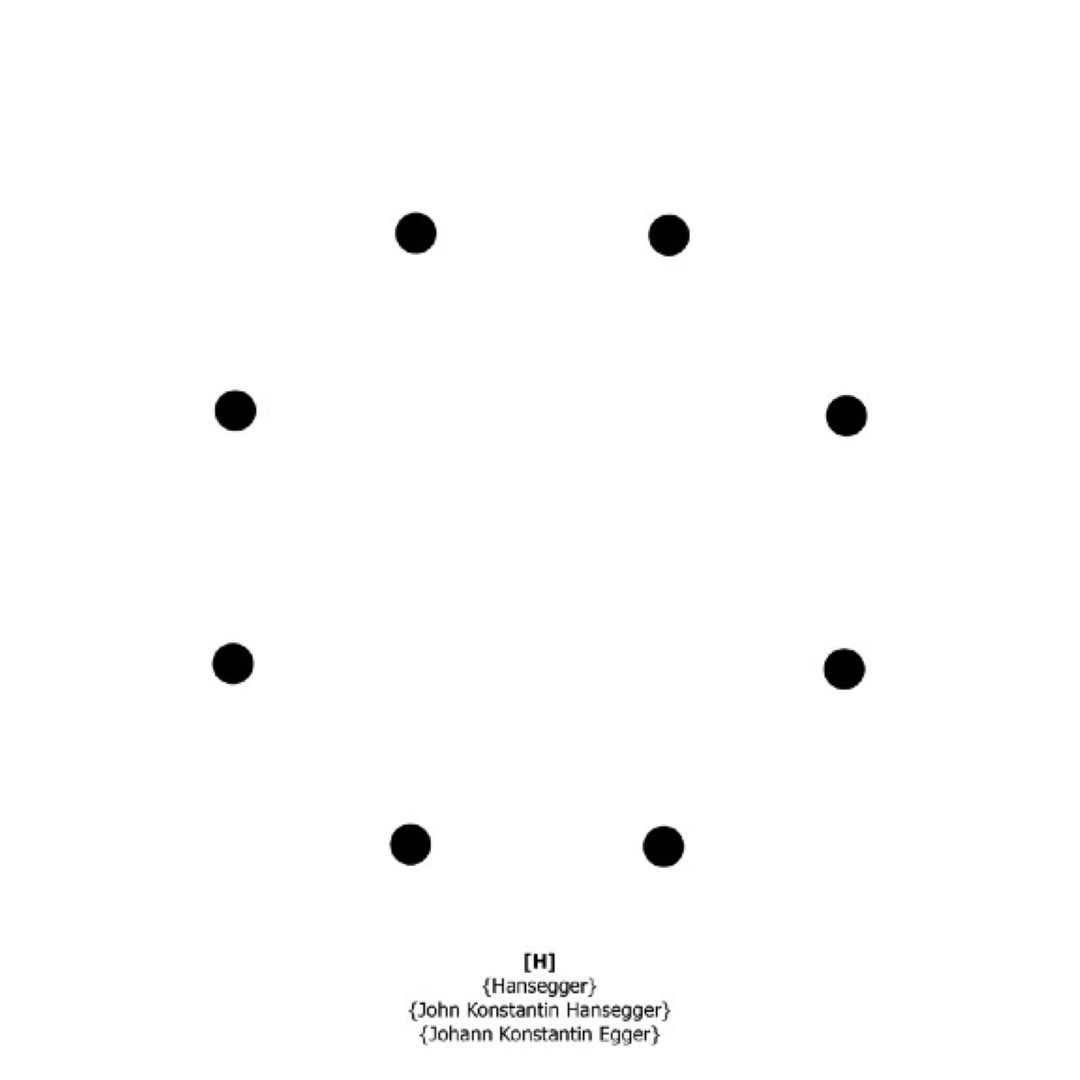
[H] Spiral of Time, 1 of 3, M.©, 2019
By starting from multiple points in time (in a circular direction), Hansegger didn’t fall into the trap of mechanically repeating previous works. A common problem for most artists, and other creatives. He could play and switch from point to point, broadening his creative vocabulary, while making the different points stronger. A form of Freestyle play.
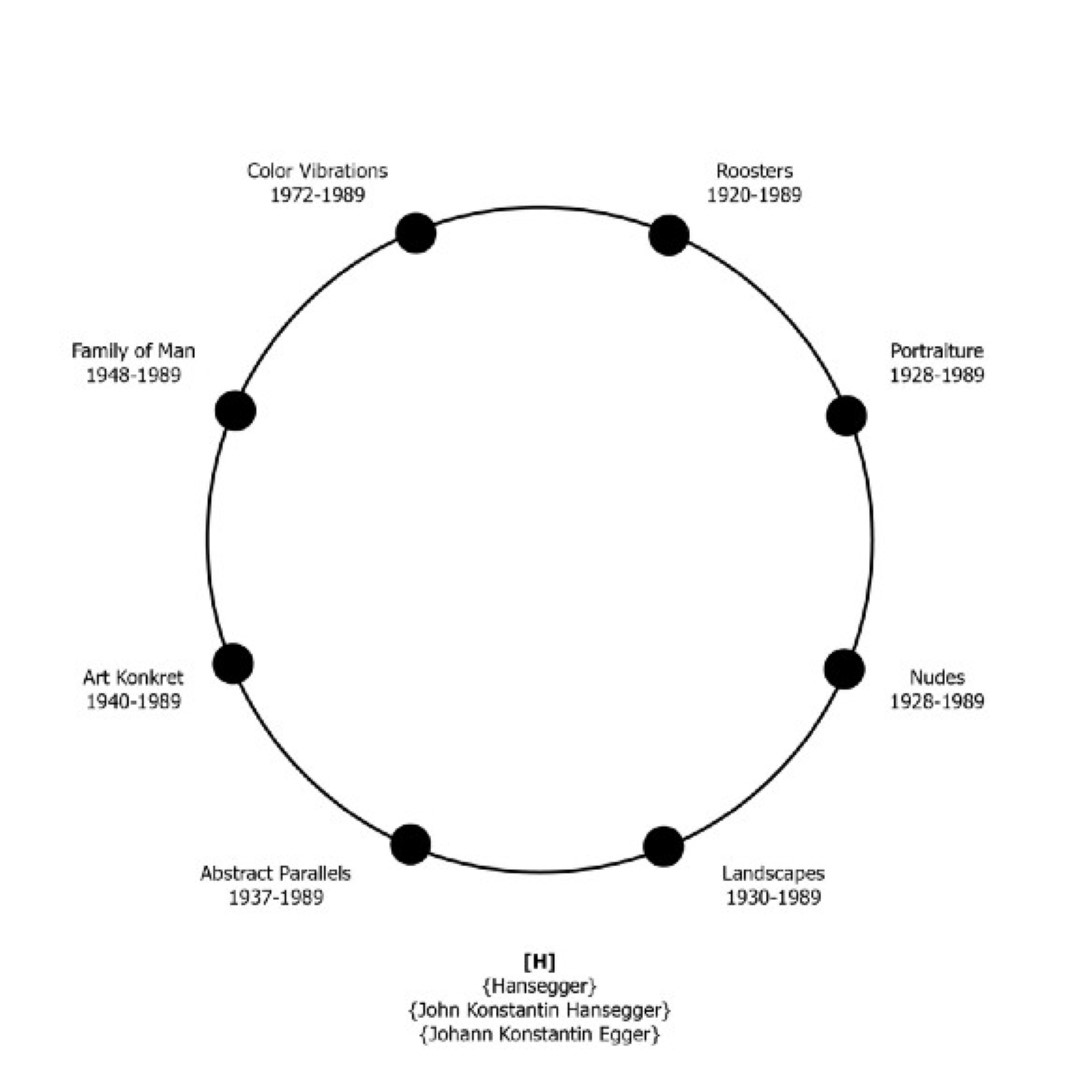
These points can be perceived as Stylistic nodes on a ring. Hansegger never abandoned one style and continuously worked on them during his lifetime. Some nodes were of his own invention {Abstract Parallels, Family of Man, Color Vibrations & Roosters}. One node is part of the collective Art-Concrete movement, others are classical nodes, such as landscapes, portraits, and nudes.
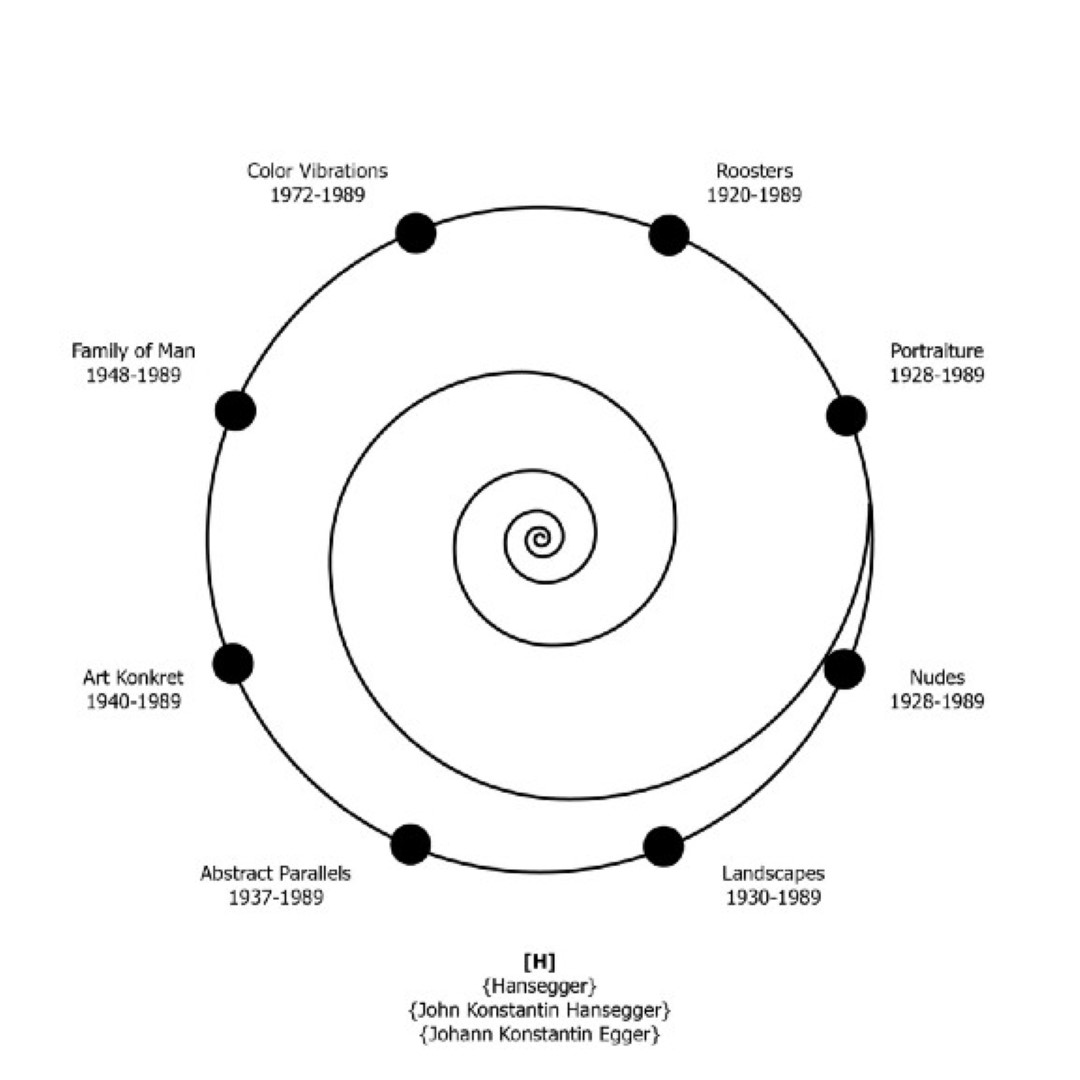
If you look at the nodes in sequential{chronos} order, you will notice a development from the classical[1], to the abstract ~ figurative[2], the abstract ~ childish[3], the abstract ~ primitive[4], abstract ~ color[5] and ending [beginning] with Roosters[~]. This is what I call the Spiral of Time.
Parallel personal development can be traced back in the work of many other artists, which I will discuss some other time. But for Hansegger it doesn’t end there.
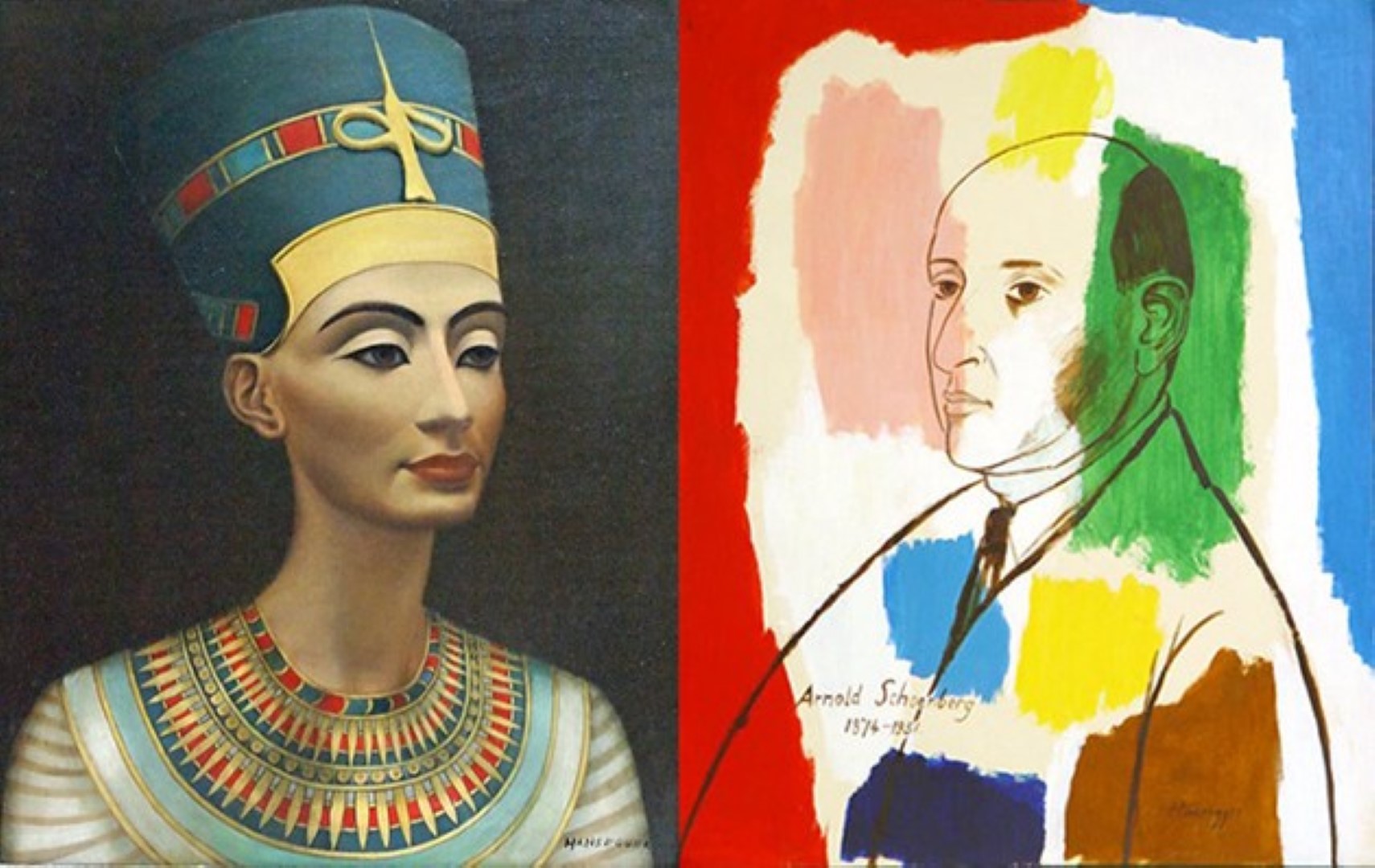
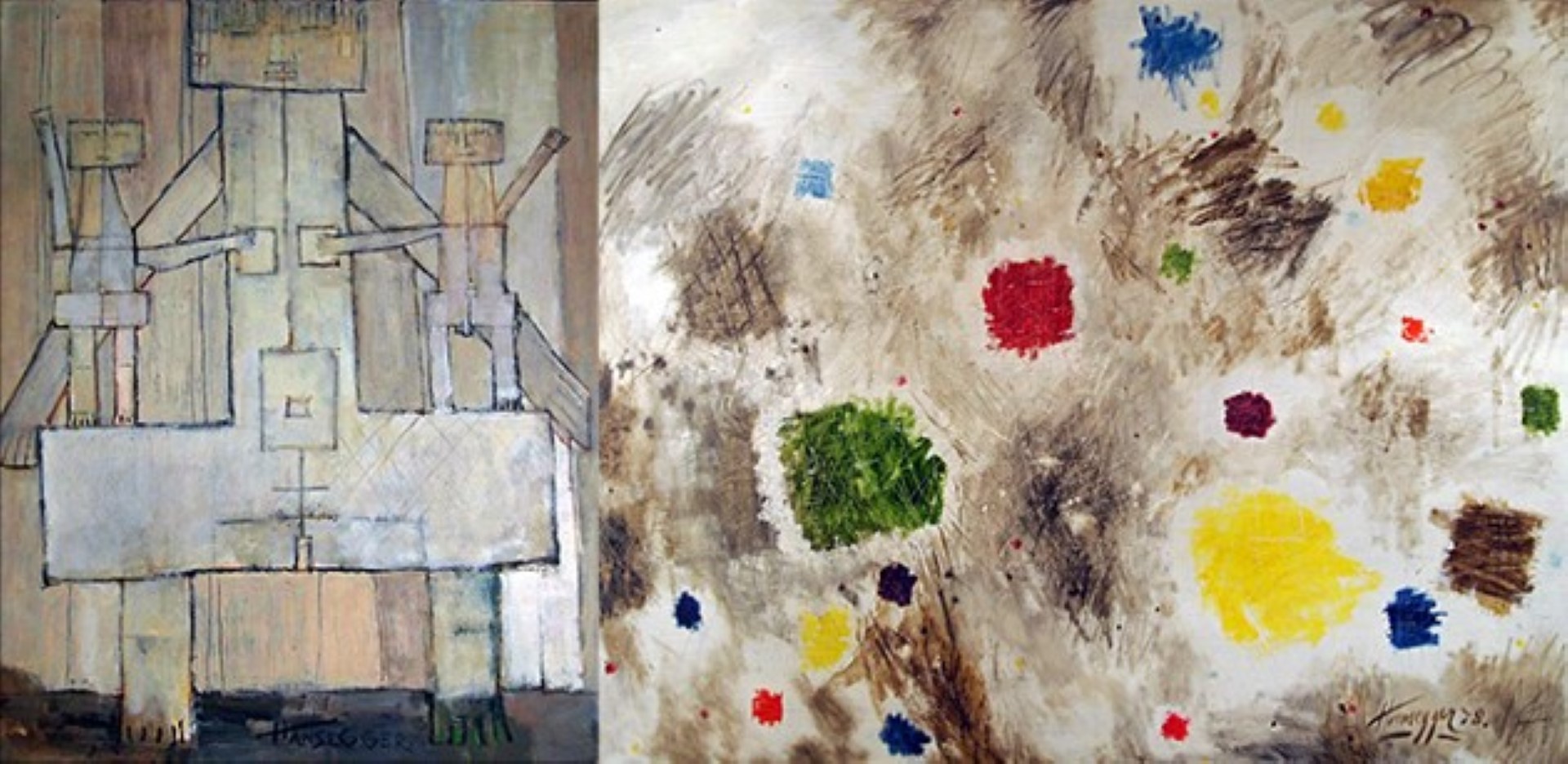
Le Coq Sportif
Cubist Roosters, Exploding Roosters. Blue, or a Red mini Rooster. Persian, Babylonian, Greek Roosters. Christian, Protestant and a Luther Rooster. Chinese or Korean Roosters.
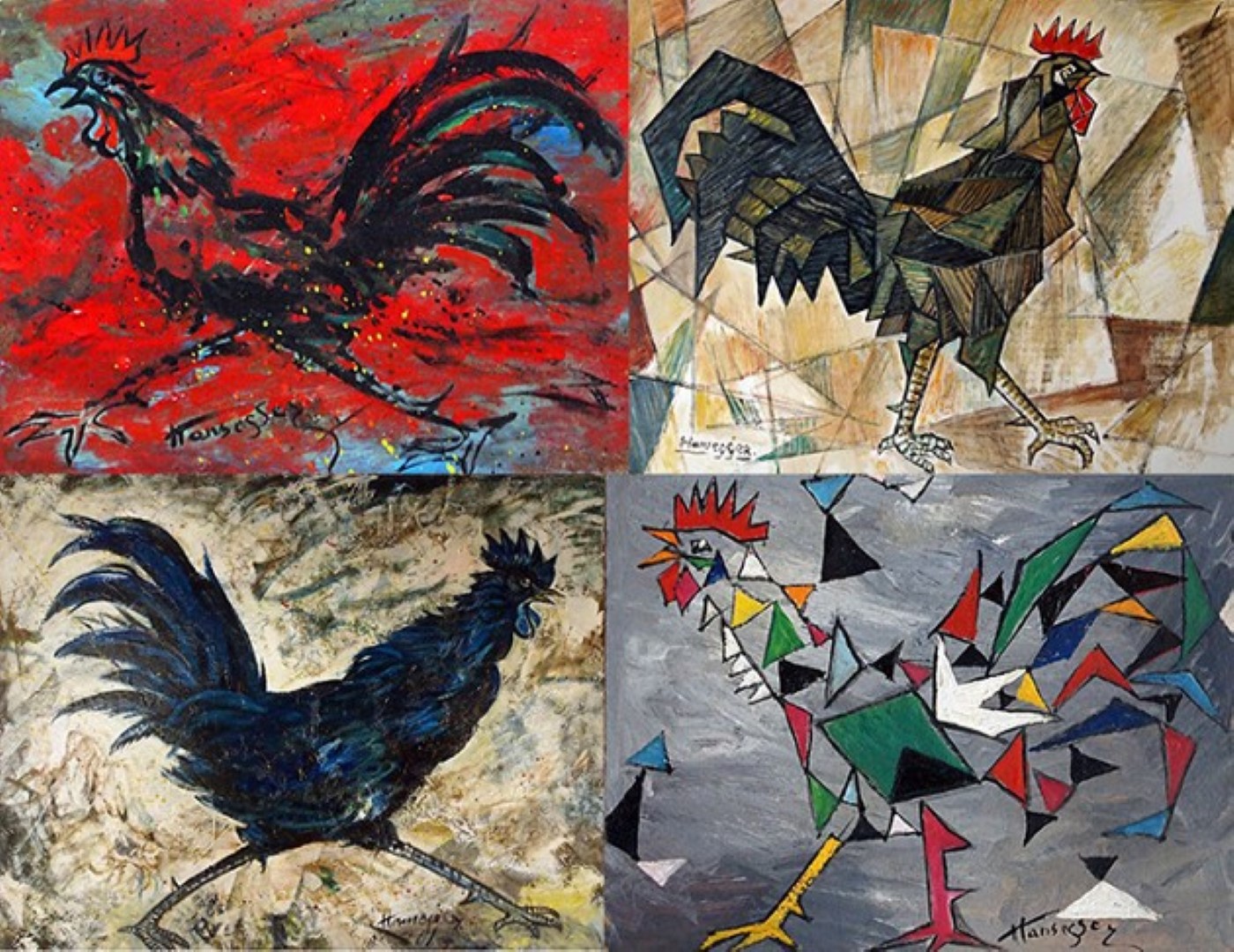
Spiral of Time {Kairos} : Synthetic Work

The most important paintings in Hansegger’s oeuvre are his Synthetic Works in which the Question of Style arises visually. At a certain moment, while being part of the Allianz movement, Hansegger and Max Bill had an argument about artistic {and financial matters}. So, they split their ways. Max Bill formed, in the following years, grounds for a “Scholastic” methodical approach of doing art; heavily influencing related creative fields, such as design, graphic and architecture, killing the free-creative spirit, that Hansegger stood for.
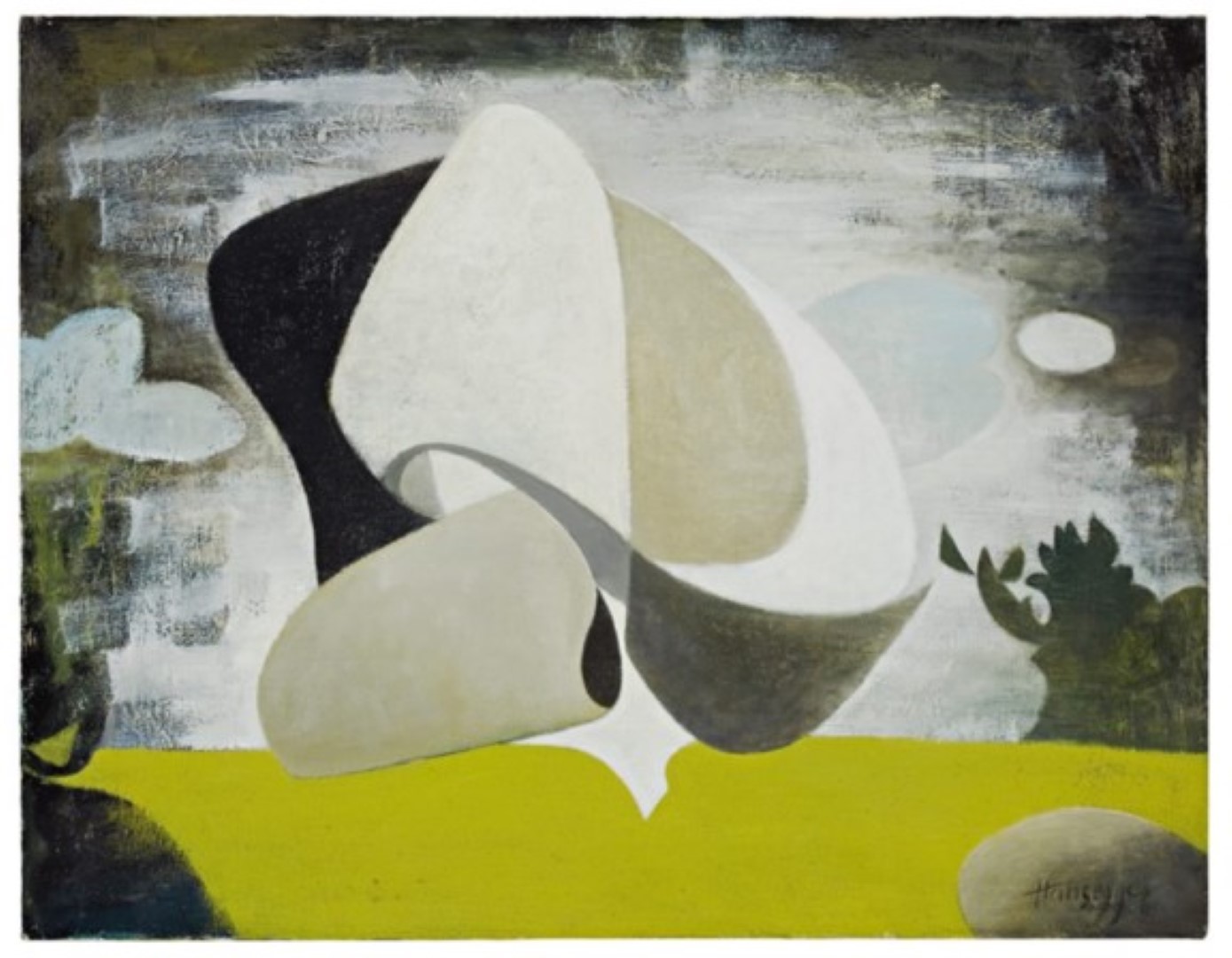
Meanwhile, Hansegger continued his journey of exploring new dimensions in art, resulting in highly imaginative creations.
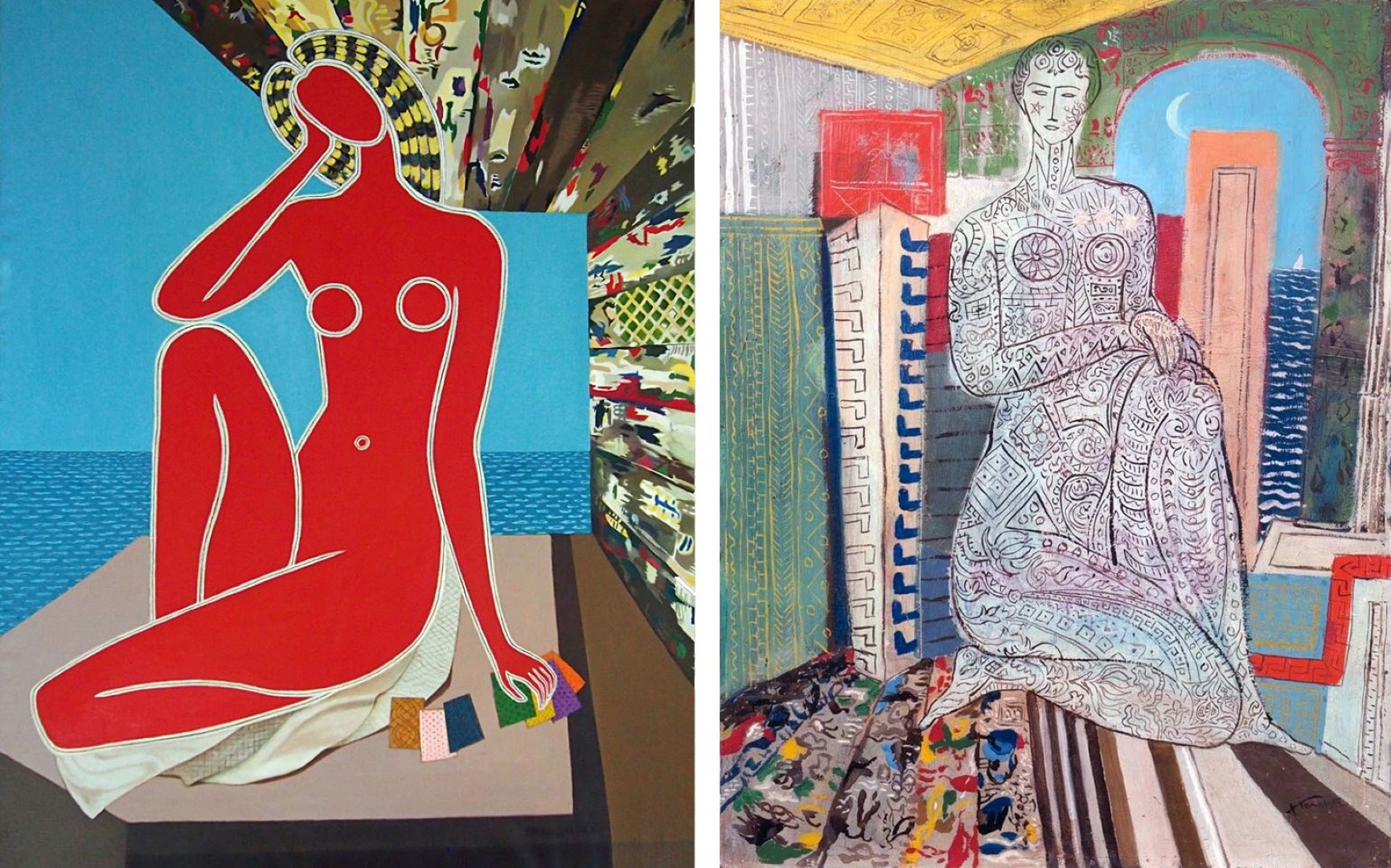
The work on the left; Soothsayer, a classic theme in art, the artist room, posing the Question of Style; a red woman (fortune-teller) sitting on a white blanket on top of a grey pedestal, holding her hand on a variety of colored cards, facing slightly bend towards the viewer, thinking, while her head is resting on her hand; in the back the calm sea juxtaposed with turbulent Abstract Parallels.
The work on the right; La Poésie, answering the Question of Style. Again, we are in the artist room. This time a colorless woman sitting inside the room, facing straight towards the viewer, tattooed with shapes derived from ancient cultures, a pentagram {a mathematical, magical, symbolic shape} on her cheek. A sort-of-piano-ladder topped with a red television screen.
Abstract Parallels again, but this time juxtaposed with earthly brownish lines on the floor. A yellow sunny ceiling. The wall with a decorated man-made wallpaper on one side, and a natural green wallpaper with a window in it, on the other side. A narrow door, covering part of the window, leaving just a section of a view on the sea, a triangle (sailing boat) and part of a curvature(moon).
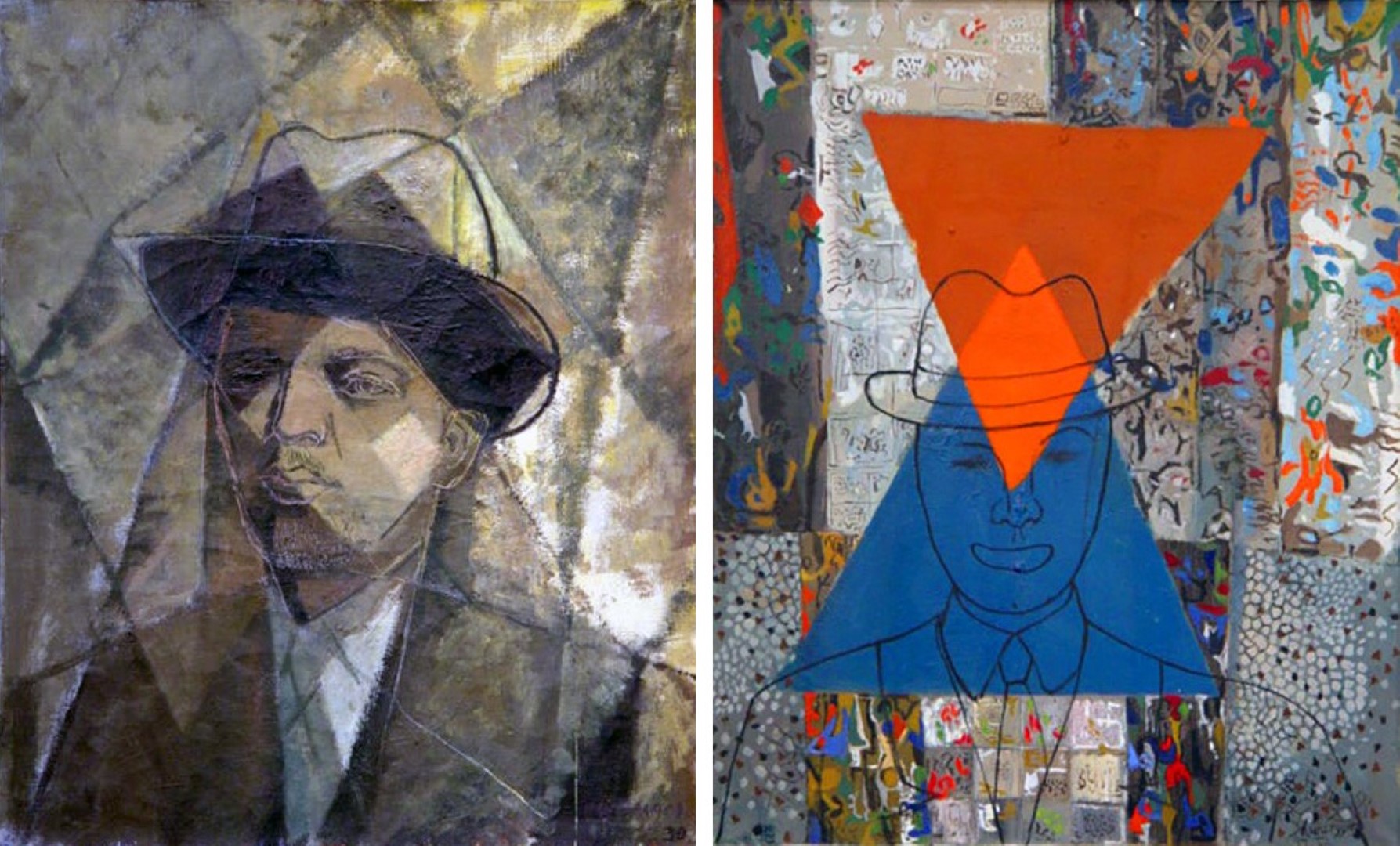
The work on the left, called Triangle depicts a portrait of a serious looking man with a hat superposed with a [Tesseract]-shaped-glass-surface, all in the characteristic brownish-earthly-cubist-color-pallet.
The work on the right, called Two Triangle, has a background with linear-wood-strokes filled in with Abstract Parallels, superposed with two triangles; the Blue & Red, which is then overlapped with the outlines of a smiling man with hat.
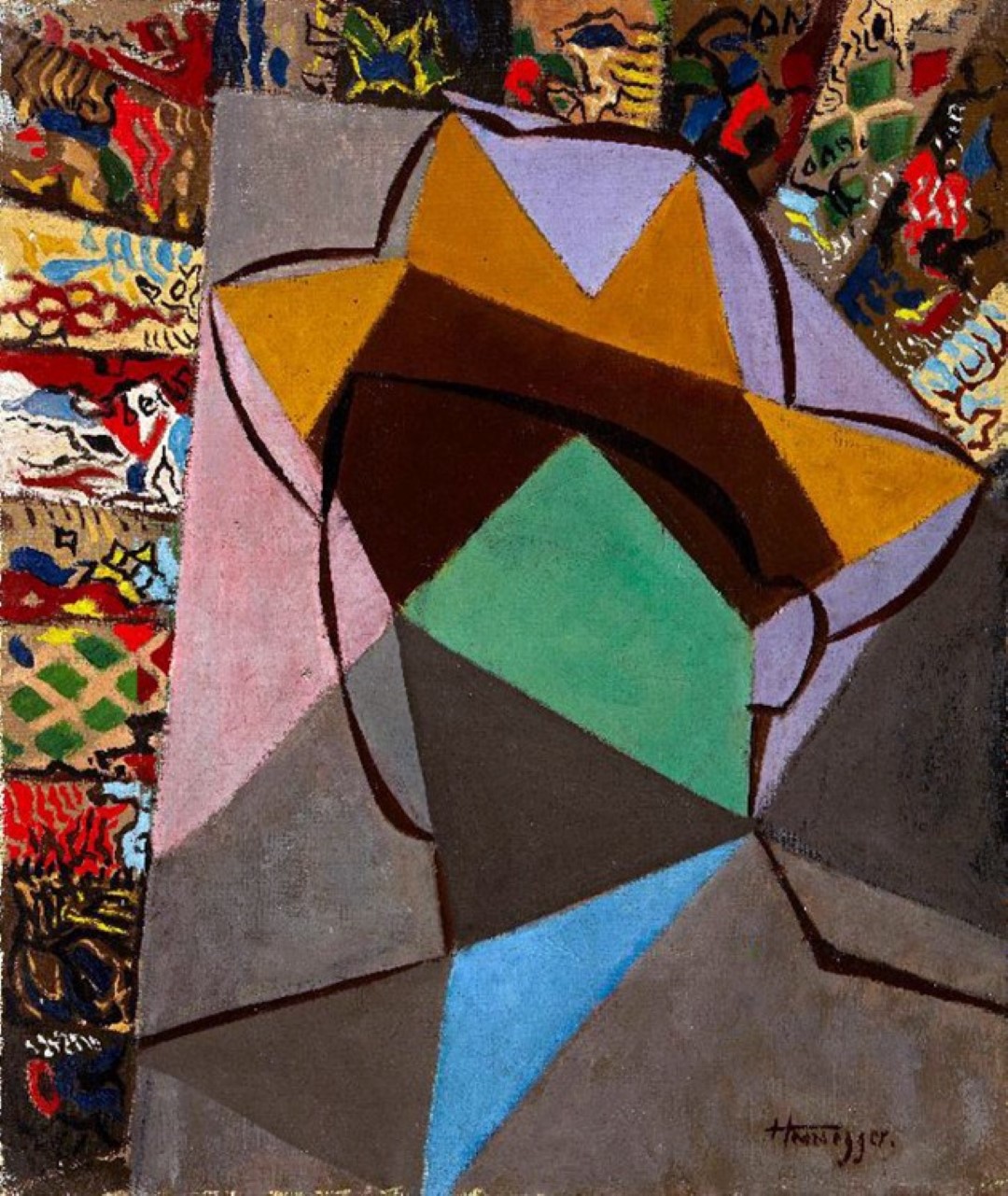
Later in his life Hansegger reconfigured his landscape painting style and coined it: Ornamentalism.
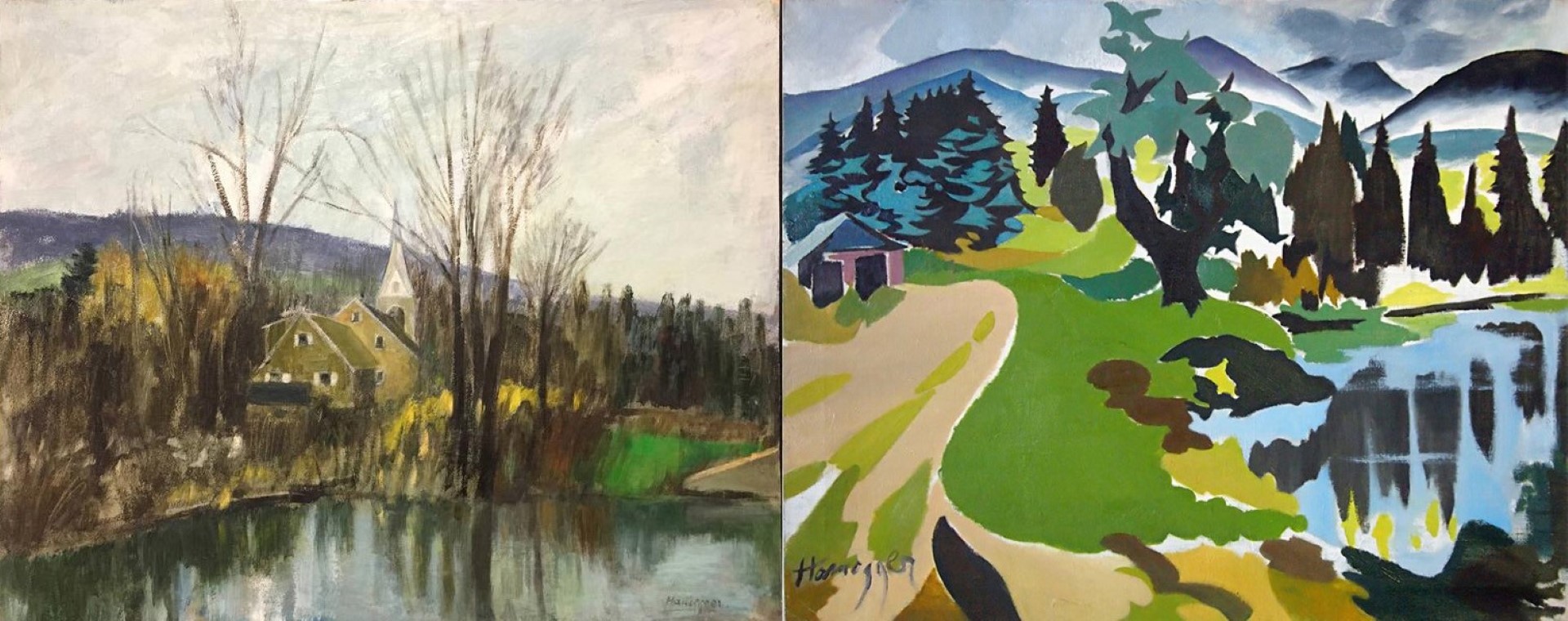
Tic-Tac-Toe [Abstract : Reality with Hansegger]
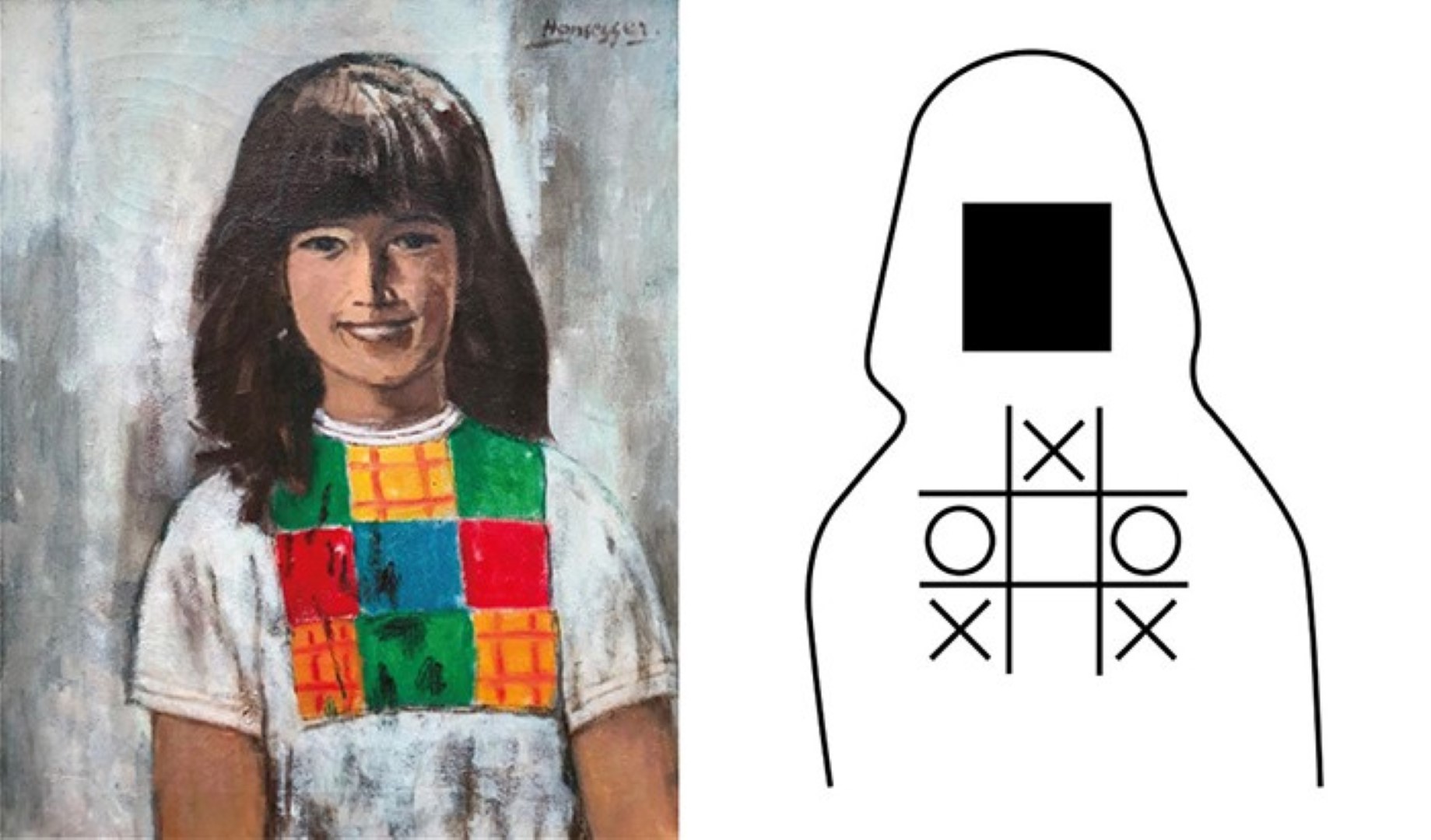
This is, at first view, a not so skilled-kitschy-looking-painting of a smiling young girl, wearing a white t-shirt with an abstract colored motif on it. The painting is titled: Betti (Betty written wrongly) with her wooden soldier. Nothing interesting, until you open your imaginative eyes.
You used to play tic-tac-toe until you figured out how to play to guarantee a stalemate, no matter what. Then it got boring, you haven’t played tic-tac-toe ever since. So you start to play Abstract : Reality instead.
Style: The Artist's vision of the world
When we consider the work of an artist, we select and display it as the main body, we neglect the rest. When an artist becomes more famous, over time more work is included, and the body extends.
In the case of Hansegger, this is an impossible task to undertake. His freestyle play resulted in a great variety of depictions. In that sense, Hansegger’s body completely disappeared behind his own curtains. An incredible achievement on itself, considering the environment he was in, working alongside the most respectable artists and meeting the prolific scientists, musicians, and politicians of his times.
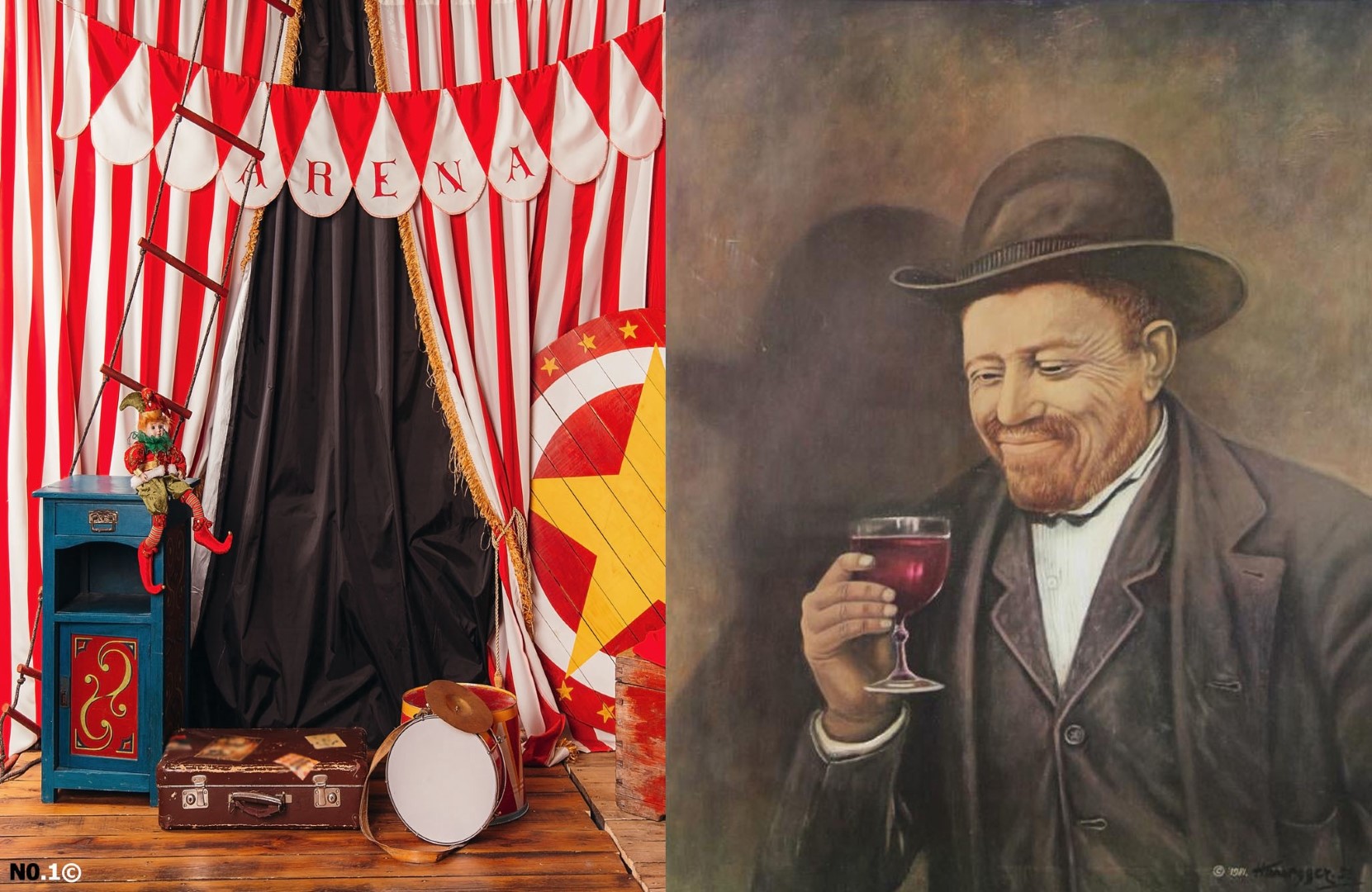
Hansegger overlooked work, contains key ingredients on the working of creativity; surprising, never settling and always experimenting. With his involvement as a gallerist, publisher, and platform-builder, he also supported many other artists in their creative journeys.
Acknowledgment: I would like to thank M. [Hansegger.ch] for his far reaching research and documentation of Hansegger’s forgotten legacy. I would also like to thank another M. [Gallery Moderne] for his short, meaningful introduction video into the work of Hansegger. All notes are linked into the text.
Hansegger : A Question of Style©
M. Production 11.2019 Triple-A Society
